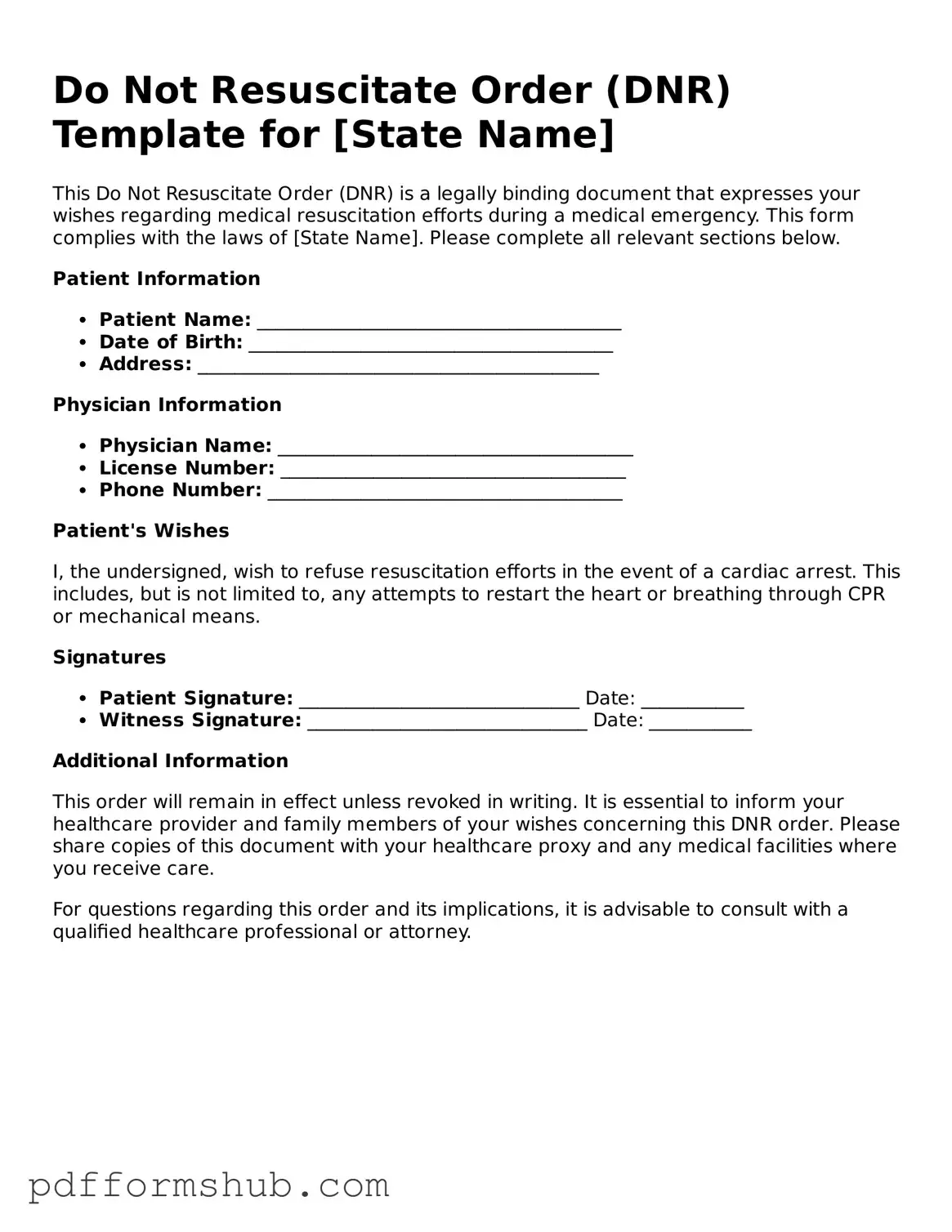The Do Not Resuscitate (DNR) Order form serves as a crucial document for individuals who wish to express their preferences regarding medical treatment in emergency situations. This form is particularly significant for those with serious health conditions or advanced age, as it allows them to communicate their desire to forgo resuscitation efforts in the event of cardiac arrest or respiratory failure. The DNR Order is typically completed in consultation with healthcare providers, ensuring that patients fully understand the implications of their decision. It is important to note that this form does not affect other medical treatments and care; rather, it specifically addresses the actions to be taken—or not taken—during life-threatening emergencies. Furthermore, the DNR Order must be readily accessible to medical personnel, ensuring that a patient's wishes are honored at critical moments. Understanding the nuances of this document can empower individuals to make informed decisions about their healthcare, reflecting their values and preferences in a way that is respected by the medical community.
